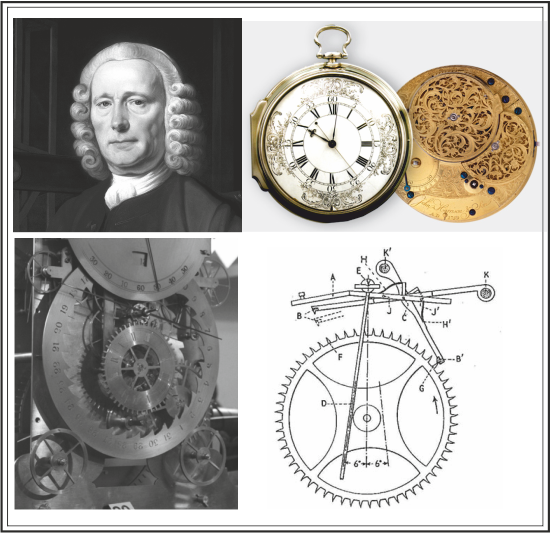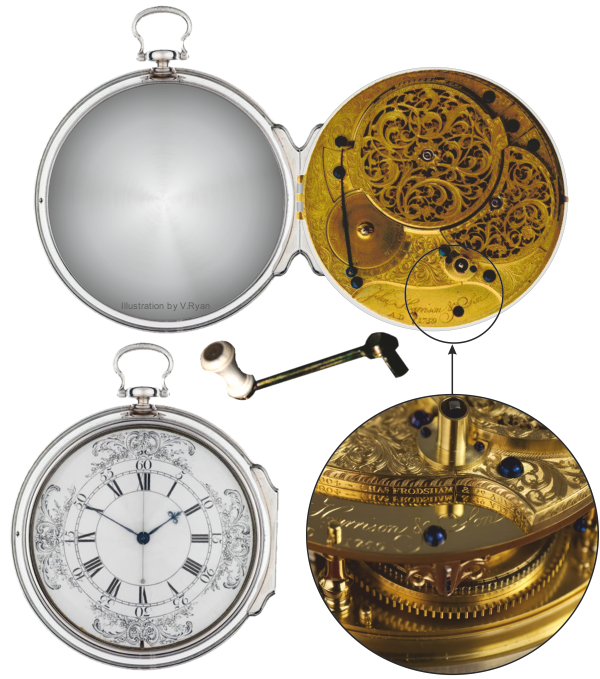V.Ryan © 2018-2022
John Harrison was a carpenter who became obsessed with clocks and in particular clocks that could keep time accurately. He designed several long case clocks, which he claimed were accurate to a few seconds a month. In the seventeen hundreds, this was a remarkable achievement.
His clocks were very special, because the mechanisms were comprised of different types of exotic woods, chosen to counter expansion and contraction and to avoid the need for additional lubrication. Harrison is known to have experimented in his own house, heating up a room to tropical temperatures to test his clocks in warm conditions. Then, testing the clocks in a room with the windows open, in cold / cool conditions.
Harrison developed many new and innovative designs for the mechanisms for clocks and timepieces.
John Harrison activity pursued the ‘Longitude Prize’, which was a very large cash prize offered by the British Government in 1714. The prize was for the designer / engineer, who developed a reliable precision timepiece, for the navigation of the high seas. The motion and nature of the sea, meant that any clock / timepiece had to be shock proof and corrosion resistant. This was an era when Britain was expanding and exploring the oceans and a precision timepiece was required for accurate navigation. In 1761, after many decades of development, Harrison came up with H4, a marine chronometer or a precision sea watch.
Captain Cook took a copy of the timepiece H4 (called K4), on his trips of discovery in the southern Pacific Ocean, creating very accurate charts as a result. Captain Cook called K4, ‘our faithful guide’.

John Harrison’s H4 (hand made between 1755 - 1759), is probably the World’s most important timepiece. It is currently at the Greenwich Maritime Museum, London.
H4 was very accurate, which meant that sailors could combine precise time keeping, with the use of other navigational equipment, to pin point where they were, even if thousands of miles away from their home port. When tested, Harrison’s H4 only lost five seconds over an 81 day return voyage to the West Indies.
The H4 required carefully 'winding' every 33 hours. Therefore, it had a small crank handle (see below).
